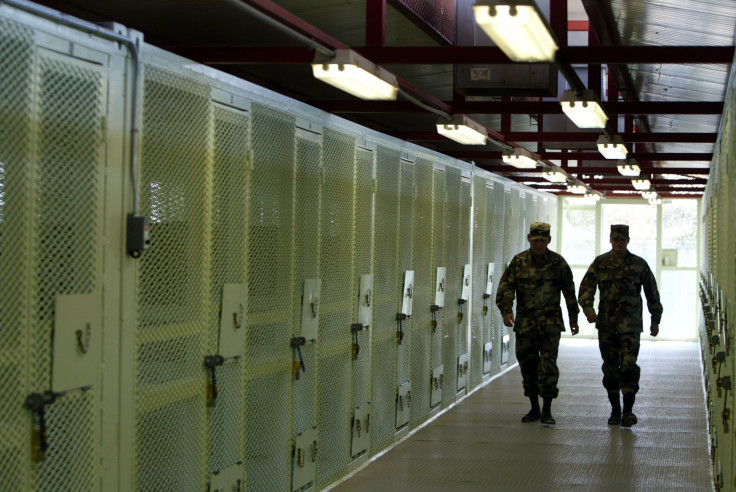
The first military plane carrying migrants has arrived in Guantanamo Bay as part of an initiative by the Trump administration to mainly hold detainees with criminal records whose countries won't take them back.
Customs and Border Protection (CBP) did not specify how many migrants were taken in the first flight. The agency did post a short video on social media showing images of it with the caption "the worst of the worst have no place in our homeland."
Flights to Guantanamo Bay have begun. The worst of the worst have no place in our homeland. pic.twitter.com/RM2ruAtrFl
— CBP (@CBP) February 5, 2025
The Associated Press detailed that there are currently some 300 service members tasked with operating facilities in Guantanamo Bay, and that figures will vary depending on the needs at a given time.
Marines and soldiers destined specifically to deal with the prepared surge in detainees began arriving last weekend, with The New York Times reporteing that the first wave of Marines arrived on February 1 from Camp Lejeune, North Carolina, with 50 more Marines arriving the following day.
The outlet added that the military declined to comment on its current capacity to receive migrants, while the Southern Command, which has oversight of the troops assigned to Guantanamo and the migration plan, did not say who is in charge of the operation.
The plan showed six designated tent camps for more than 11,000 migrants, with the largest of being able to house more than 3,000 people at once.
Although preparations continue to take place in order to build more tent cities, Secretary of Defense Pete Hegseth said in late January that about 6,000 deportees could be housed "on the golf course."
Despite Trump's plans of detaining up to 30,000 immigrants in Guantanamo, Department of Homeland Security (DHS) and Navy documents from 2021 and 2022 reviewed by Drop Site New show that the Trump administration may not be able to reach such a figure anytime soon. The documents in fact show that the detention center only has the capacity to hold 400 people at the moment.
Holding immigrants in such facilities is also costly for the government. In fact, that may be the most expensive option, according to an Axios review of various estimates, which put yearly detention costs at $66 billion under Trump's possible mass deportation plans. ICE currently has only about 38,000 people in detention— prioritizing noncitizens the border patrol arrested at the Southwest border and noncitizens with criminal histories.
© 2025 Latin Times. All rights reserved. Do not reproduce without permission.





